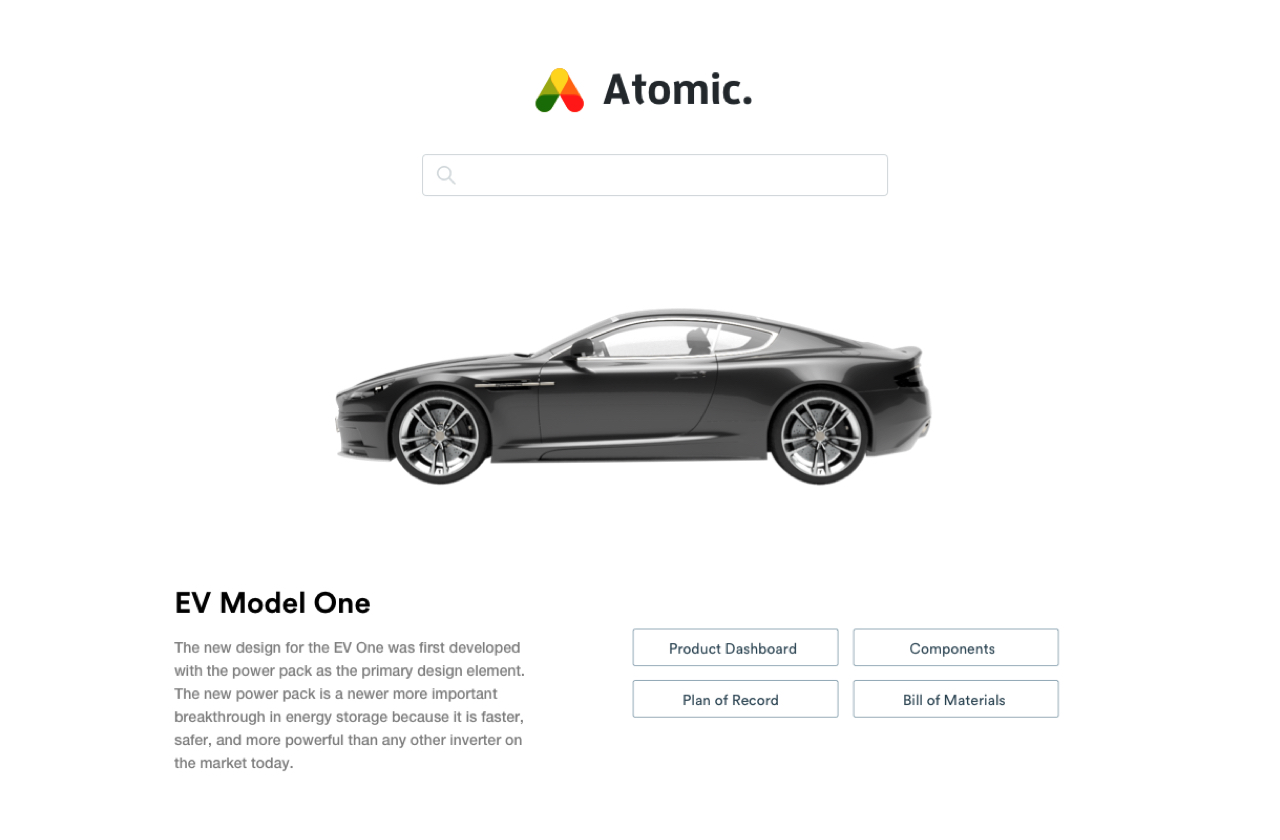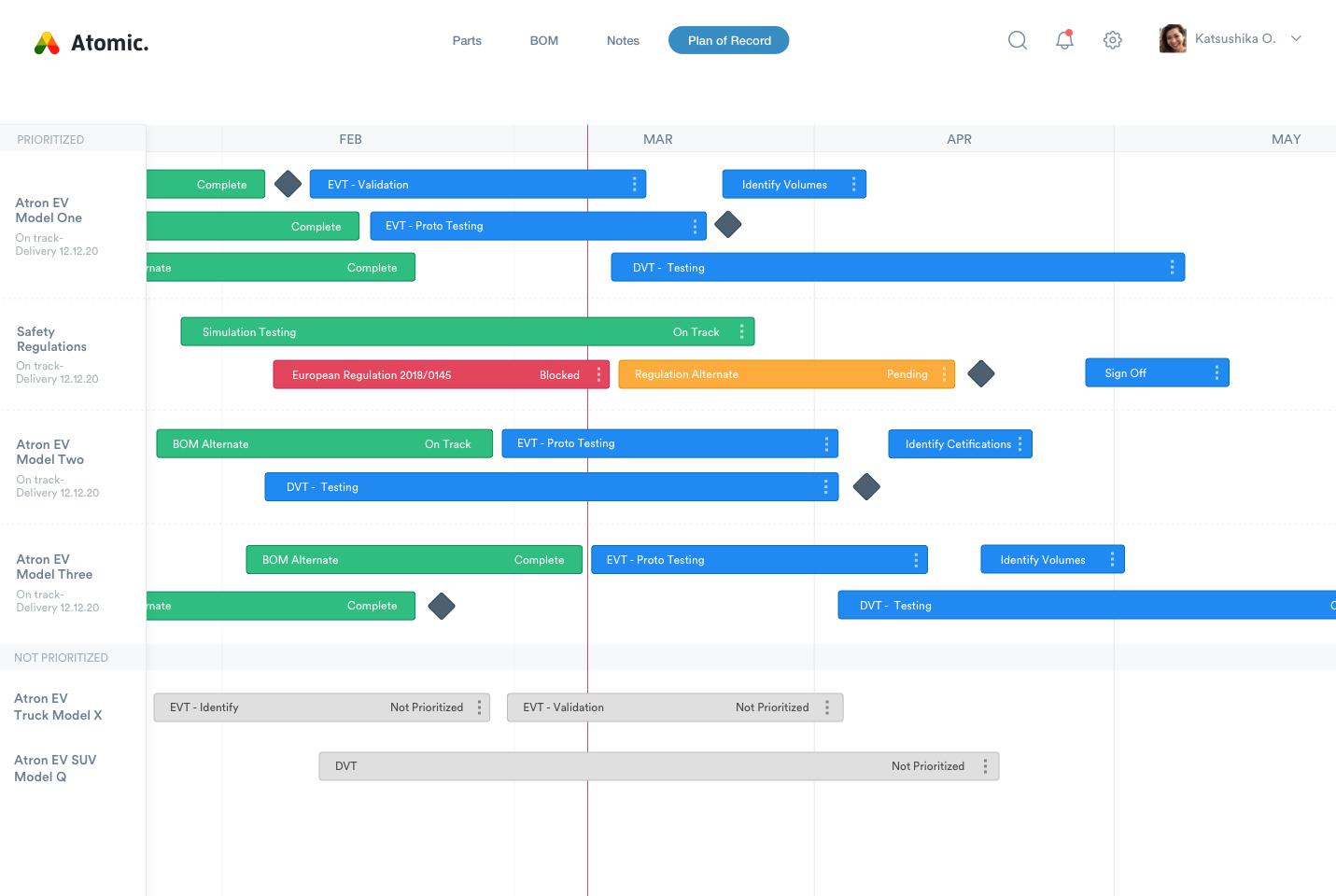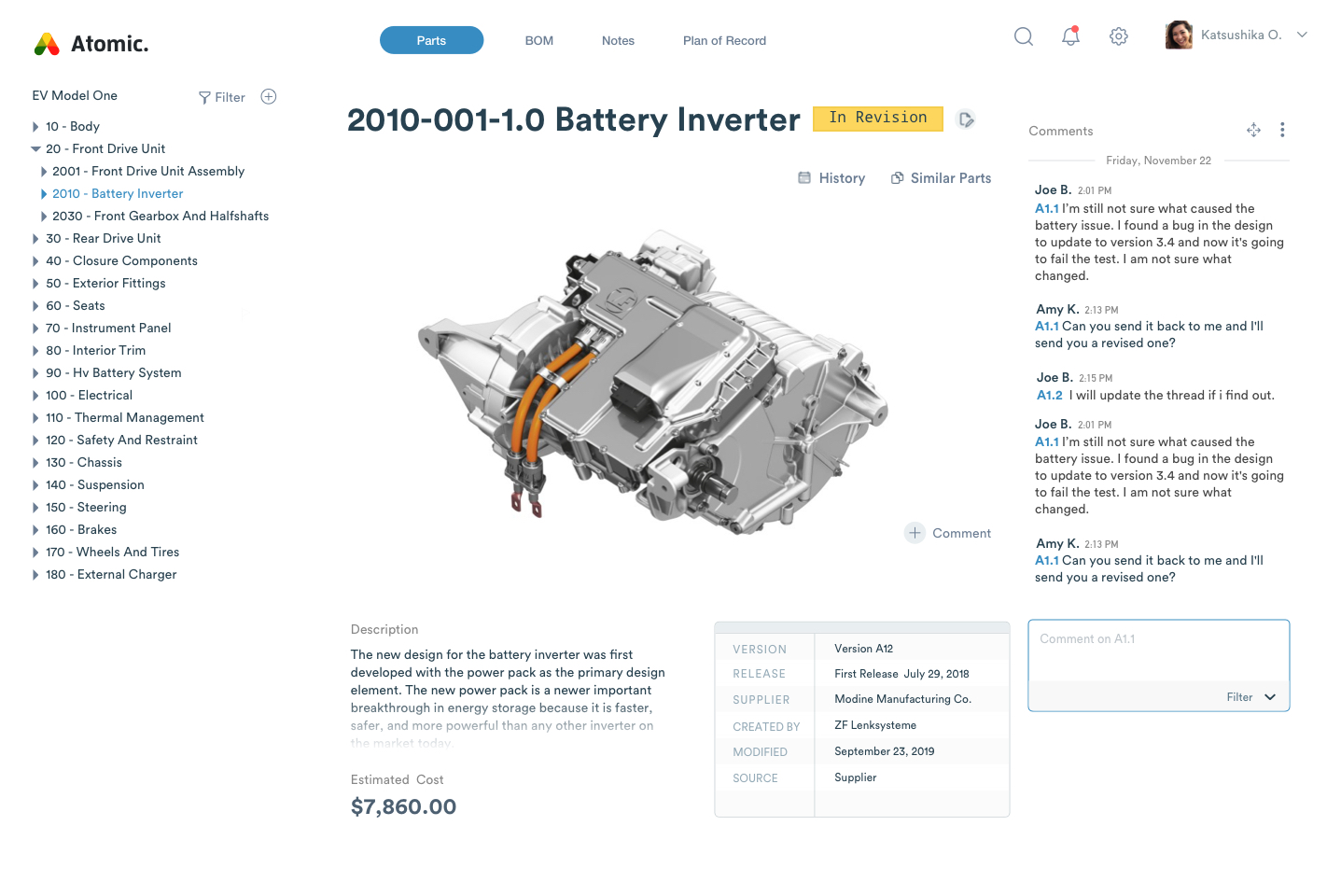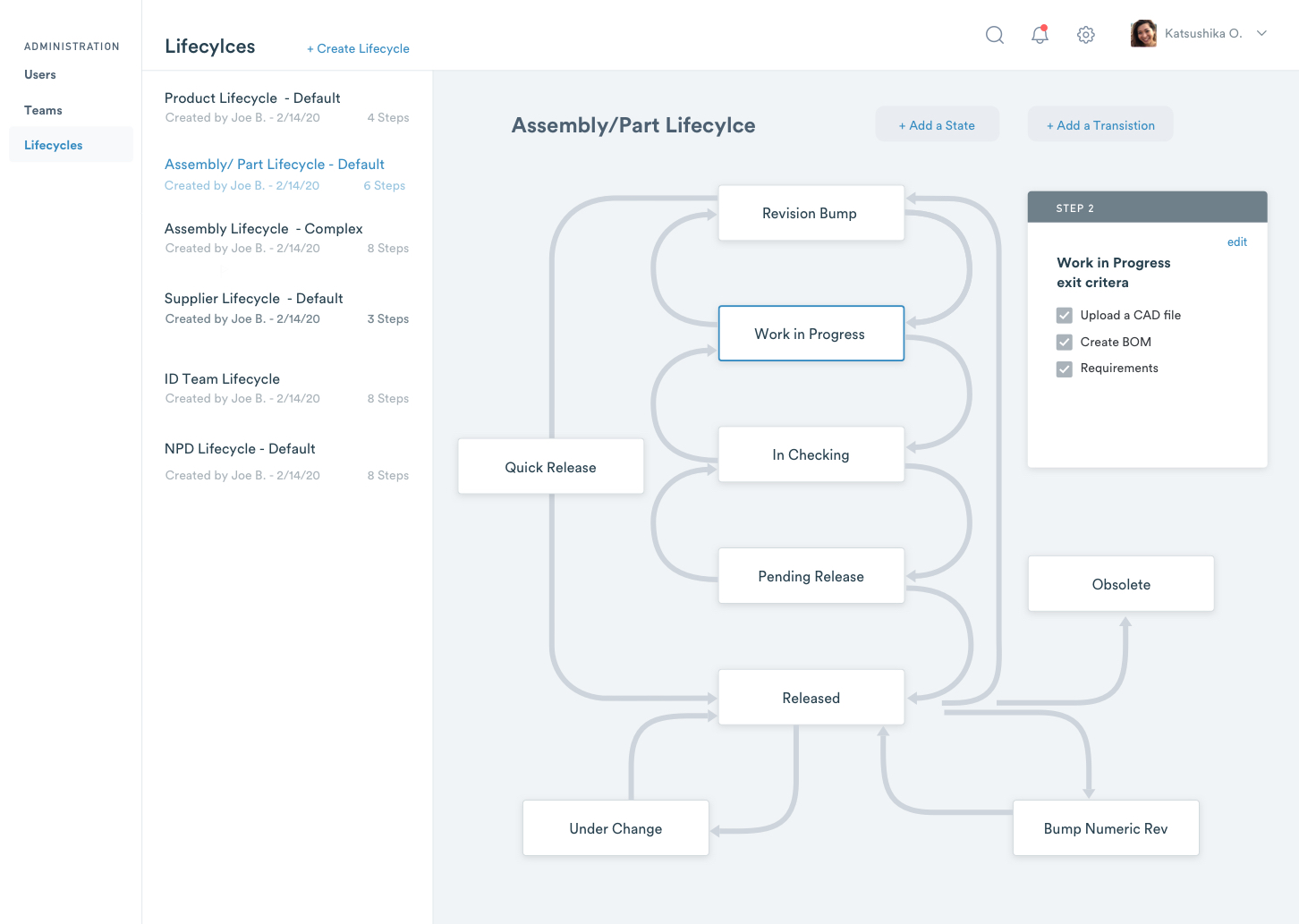Atomic PLM, a holistic product lifecycle management platform was created during my time as a designer in residence at Sutter Hill Ventures. I worked as one of two product designers responsible for ideating, iterating, and refining the early product vision under the guidance of SHV partner, William Bull. We worked closely with an entrepreneur in residence for a little over six months to deliver a vision based on dozens of rounds of stakeholder feedback. We set out to create a product and brand that captured the collaborative and functional needs that weren't present in today's hardware PLM tools. The following screens are still works in progress, as this project was halted mid-development.


THE PROBLEM
Hardware product processes have evolved
The entire project was predicated on the fact that hardware product processes have evolved, but the software used to create the hardware has not.
The entrepreneur in residence made cold call to various representatives and industry specific leaders to gather initial customer needs, collect data about the available market, and confirm initial theories about the needs of the people that utilize PLM processes as part of their day-to-day workflow.
MY ROLE
I worked as one of two product designers responsible for ideating, iterating, and refining the early product vision of Atomic PLM, under the guidance of SHV partner, William Bull. I was responsible the following screens, rendering the 3D work, and crafting the brand and product deck to help pitch Atomic as an industry-leading PLM product.

BEGINNINGS
Early insights
At the outset of the project we had a fairly clear mission and specific goals for the platform. However, getting feedback from various stakeholders and listening to the limitations they face in their current software helped shape specific feature design.
Rapid iteration and continuous feedback
We also attempted to uncover the most problematic areas in the their process. Unsurprisingly, we discovered the greatest friction existed in the collaborative process, specifically with teams and their hardware suppliers. Teams found it difficult to assess and negotiate risk, make accurate cost estimates, and felt they were too dependent on their suppliers.
We discovered teams were using multiple pieces of expensive application specific software, and moving between these systems was equally ineffecient. PLM software specifically has been relegated as the repository of product data.

DISCOVERY
Product and market validation
We had a clear idea of how we might solve some of these problems, but we needed to be certain that we were solving them in a smart and effective way. It was clear business outcomes depended on the data that was held in PLM systems, and most organizations were stopped in their tracks if their software didn't operate the way they needed it to, and some of these companies were spending up to 50% of their budget on custom integrations and support fees alone. It was clear they needed a better solution, and this was a fairly consistent story across multiple organizations of all sizes.
Analysis, Transparency, Speed
We needed to build a collaborative tool that provided participation and visibility across departments and suppliers with a self-service workflow, and workflow management capabilities.
This could be done with a few essential tools with a cloud-based infrastructure.
- Parts Library
- BOM Analysis
- CAD Visualization
- Change Management Flow
- Supplier Network Communication
- Plan of Record
- Self Service Administration

A fresh overview of your products
The producer of products, hardware or otherwise, doesn't always gets the opportunity to zoom out to view the products they're building in their entirety, while in the midst of the creation process. We found this to be specifically true when dealing with hardware, so we created a landing page that helped give the customer, and their organization, a clean, uncluttered overview of their products they're currently working on. They can then drill into the areas of production they need to focus on.
We chose to focus a larger initiative, building a car, to highlight that this software could scale to such a task, but could easily capture all the various pieces and parts that go into hardware manufacturing.


A comprehensive and automatic plan of record
Every complex organization has a need to see an overview of what their team is working on, and we wanted to improve this by reducing the wasted cycles chasing team members to determine the status of various intiatives. A central system that would allow the organization to prioritize initiatives and define milestones.
Additionally, we wanted to provide the ability to monitor real-time activity, integratable with various third party project management software.

3D Visualizations and improved UX
We wanted to improve the process of viewing hardware, isolating components, improving the conversation, and providing a better experience for all of the various stakeholders involved in the process to faciliate a faster production time and improve ineffecient or archaic methods. I rendered out single lit 3D assets to start giving a better sense of what would be possible through a CAD visualization from a browser.

Effortlessly reuse with a parts library
In addition to extracting complex data from CAD, you can leverage the ability to identify duplicate or similar parts and combine volume to reduce the necessary budget. We wanted to allow the user to extend their library to support new properties and multiple levels of classification, all while being self-service and in one centralized location for all collaborators.


Self service administration
We wanted to give an area for managers and administrators to help faciliate movement in areas that typically cause friction. This system would ideally be flexible enough to do everything from onboarding suppliers to soliciting data to gathering supplier feedback; a simple point and click workflow configuration that could model complex collaborative change processes.
We went through quite a few whiteboard revisions before arriving at a feasible solution, but this set of screens has a lot of work left to do.

COVID disruption and rollout
Unfortunately due to COVID, supply chain disruption, and economic uncertainties involving manufacturing, the project was shelved until further notice, and all further work was halted.
I do not have metrics to highlight the success of these features, however the feedback we were recieving was incredibly positive, and it felt like we were moving in the right direction. I hope to one day see something like this platform become a reality.